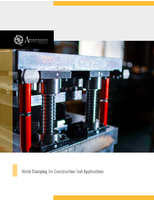AC Motor Controllers and Drives
Gearheads vs. Programmable Index Drives for Horizontal Rotation Application

In Industrial Automation, it seems there is a growing trend of rotation devices to become infinitely programmable. When doing so, some find using a gearbox or gearhead would work fine for this, coupled to a servo motor or AC motor with encoder. Others have been finding out the difficult way that on horizontal rotating applications where high inertias coupled with the requirement for high accuracy come into play, geared solutions may not be such a great solution.
The issue is on horizontal rotating applications with high inertial loads, many people only look into the torque output of the geared solution, and do not consider the dynamics of their application, or the inertia that the system has. Then, when sizing the motor for the application, the motor is sized again based on its torque output, and inertia mismatch is not considered.
When the application comes to life, the torque necessary to rotate it is there. However, there will be likely shortcoming on the positioning aspect and the machine builder is left trying to figure out how to position a very much uncontrollable device. The reason is because the geared device inherently has some backlash, but even more so, the inertia mismatch between the motor and the application is very high.
Instead, if the machine builder considered implementing a programmable cam driven index drive, these issues would not come into play. With a cam indexer from Motion Index Drives, there is NO backlash or inaccuracy between the rotating dial and cam. This is a rigid connection. Also, when cam driven index drives are sized, they are always sized based on inertia, not on torque By sizing the unit based on the inertial load we can ensure that all the internal components in the index drives will withstand the high inertial loads ideally throughout the entire product lifetime.
Finally, the inertia mismatch issue is eliminated. When using a programmable index drive, the index drive itself will always have an internal reduction (depending on model between 10:1 and 40:1) and this unit is coupled to a gear box with another ratio (typically between 15:1 and 50:1). What you end up with is a very high gear ratio, which is beneficial in two ways. First, it greatly reduces the size of the motor required, as the torque is multiplied so much. Second, the inertia mismatch is improved exponentially.
On an index drive application for a horizontal axis, 10:1 is the recommended maximum. This mismatch is very hard to achieve when using a geared solution without the use of a large inertia motor.
Motion Index Drives
1204 East Maple Rd. Troy MI 48083
www.motionindexdrives.com
info@mid.us.com




